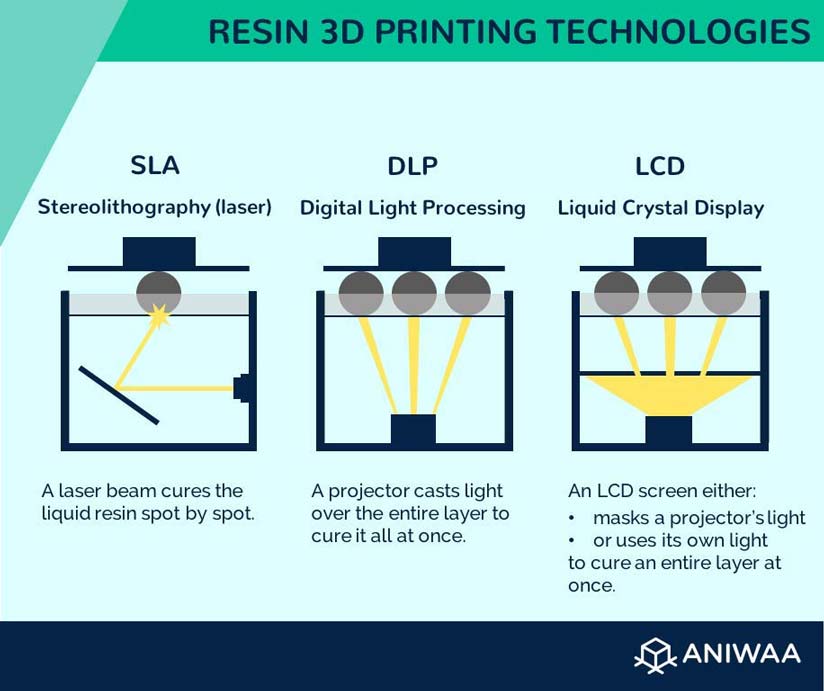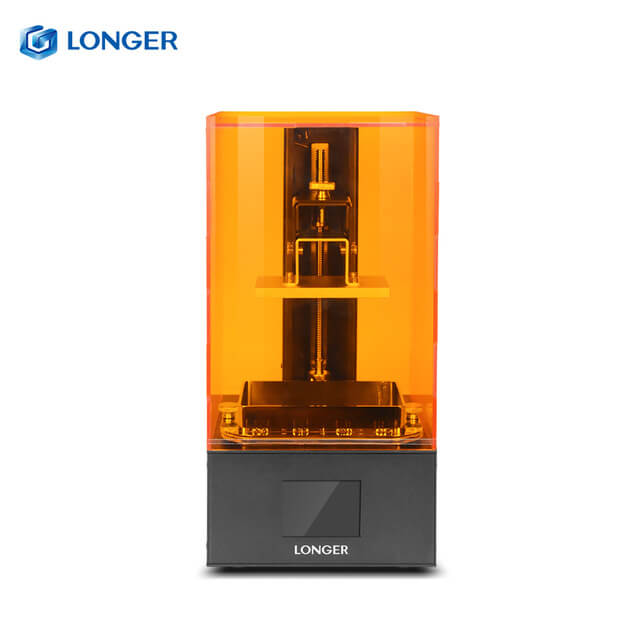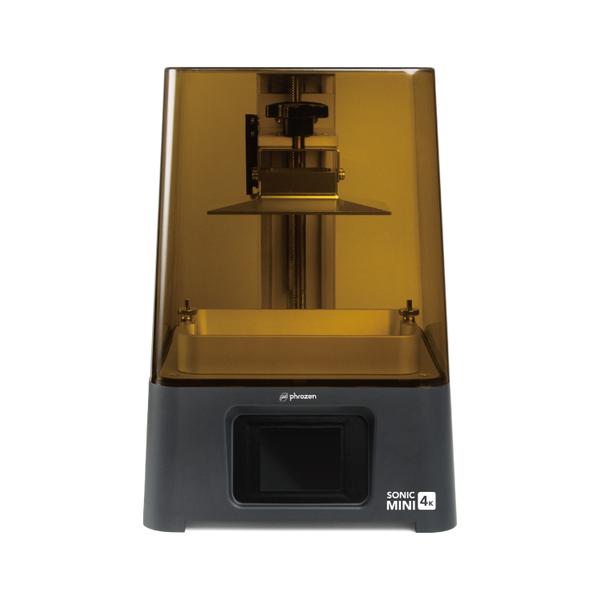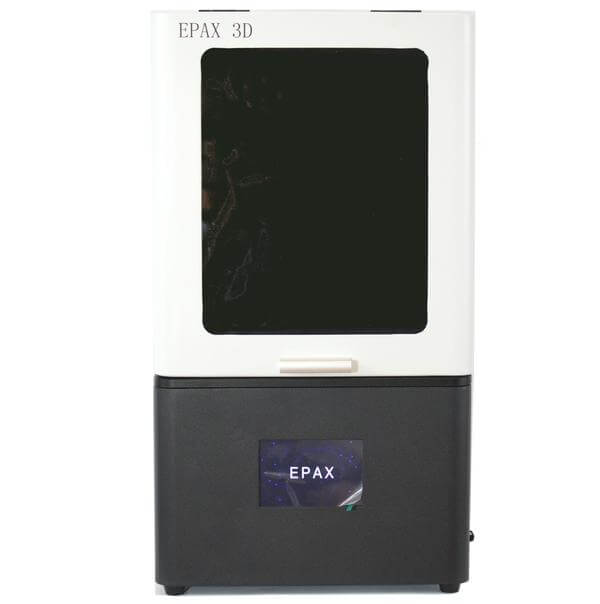Cheap resin 3D printer: 9 best options in 2024

What’s the best cheap resin 3D printer in 2024?
Cheap resin 3D printer announcements have flourished over the past few years. Initially intended for professional use in a variety of industries, resin 3D printers are becoming more and more common at the consumer level.
This is thanks to a relatively new resin 3D printing technology that involves the use of an LCD screen, which is widely available today and at a low cost. Hence, complex DLP and laser systems are being swapped out to make resin 3D printing more accessible and affordable to hobbyists.
If you’re a pro, you may want to take a look at our selection of professional resin 3D printers.
Generally, LCD resin printing also allows for faster 3D printing than laser-based technologies, as LCD printers are able to solidify entire layers of resin at once.
Resin 3D printers are one of the most precise types of 3D printers, especially in comparison with FFF 3D printers (entry-level ones, at least). However, you do need to know that at this stage and especially in this price range, resin 3D printing can get messy and the material is pretty smelly.
The resin vat and build plate need to be carefully cleaned after each print, the vat film should be changed every so often, and you also have to clean the printed models and put them in a special light for them to harden correctly. For your safety, it’s also required to wear gloves and recommended to wear a mask.
If you’re willing to go through all of that, take a look at our selection of some of the best cheap resin 3D printers on the market this year!
Looking for something a little easier? Check out these filament-based desktop 3D printers for under $300.
9 best cheap resin 3D printers in 2024
| Brand | Product | Build size | Country | Price
Approximate starting prices based on supplier-provided information and public data. Prices may vary by region, over time and do not include additional products or services (taxes, shipping, accessories, training, installation, …).
| |
|---|---|---|---|---|---|
| Qidi Tech
Product data validated by the manufacturer.
| Shadow 5.5 S | 115 × 65 × 150 mm | – | $ 149 | Quote |
| ANYCUBIC | Photon Zero | 97 × 54 × 150 mm | – | $ 169 | Quote |
| ELEGOO | Mars Pro | 120 × 68 × 155 mm | – | $ 250 | Quote |
| Creality
Product data validated by the manufacturer.
| LD-002R | 119 × 65 × 160 mm | China | $ 250 | Quote |
| Longer3D | Orange 10 | 98 × 55 × 140 mm | – | $ 269 | Quote |
| Phrozen
Product data validated by the manufacturer.
| Sonic Mini 4K | 134 × 75 × 130 mm | Taiwan | $ 330 | Quote |
| EPAX | X1 | 115 × 65 × 155 mm | – | $ 399 | Quote |
| Phrozen
Product data validated by the manufacturer.
| Shuffle XL Lite | 188 × 120 × 198 mm | Taiwan | $ 399 | Quote |
| ANYCUBIC | Photon S | 115 × 65 × 155 mm | China | $ 469 | Quote |
The products in the table are ranked by price (low to high).

| Product | Brand | Build size | Price
Approximate starting prices based on supplier-provided information and public data. Prices may vary by region, over time and do not include additional products or services (taxes, shipping, accessories, training, installation, …).
| |
|---|---|---|---|---|
| Shadow 5.5 S | Qidi Tech
Product data validated by the manufacturer.
| 115 × 65 × 150 mm | $ 149 | Get a quote |
| Photon Zero | ANYCUBIC | 97 × 54 × 150 mm | $ 169 | Get a quote |
| Mars Pro | ELEGOO | 120 × 68 × 155 mm | $ 250 | Get a quote |
| LD-002R | Creality
Product data validated by the manufacturer.
| 119 × 65 × 160 mm | $ 250 | Get a quote |
| Orange 10 | Longer3D | 98 × 55 × 140 mm | $ 269 | Get a quote |
| Sonic Mini 4K | Phrozen
Product data validated by the manufacturer.
| 134 × 75 × 130 mm | $ 330 | Get a quote |
| X1 | EPAX | 115 × 65 × 155 mm | $ 399 | Get a quote |
| Shuffle XL Lite | Phrozen
Product data validated by the manufacturer.
| 188 × 120 × 198 mm | $ 399 | Get a quote |
| Photon S | ANYCUBIC | 115 × 65 × 155 mm | $ 469 | Get a quote |
Overview of the best low-cost resin 3D printers
Qidi Tech (or Qidi Technology) is a leading manufacturer of 3D printers for hobbyists. Their Shadow 5.5 S 3D printer is available at a steal!
It’s equipped with a large color touchscreen, a dual linear rail for the print bed, and a 2K LCD screen for high-resolution prints. There’s also an air filter to help reduce the strong resin odors.
Users have noted that the Qidi Tech Shadow resin printer is one of the easiest to use.
The ANYCUBIC Zero has been a community favorite for a while. It’s one of the best offers on the market, delivering good quality prints and a relatively easy setup.
If you have any trouble with the printer, you can ask one of the many ANYCUBIC resin printer owners and users for help on forums and dedicated Facebook groups.
Like many other cheap resin printers, the Zero has a touchscreen and USB connectivity for offline printing.
The Orange 10 is Longer3D’s most affordable desktop resin 3D printer. According to user feedback, it offers a good price-to-performance ratio. It is equipped with a touch screen display for real-time print status monitoring.
A nice addition is its ability to detect if the LCD screen is overheating, in which case it automatically pauses the print to give the screen time to cool down.
Also, this cheap resin 3D printer is delivered with everything you need to get started, including a bottle of resin, gloves, and an SD card.
Creality is a prominent brand when it comes to affordable 3D printers. While they are mostly famous for their CR-10 series of large volume FFF 3D printers, they do also sell cheap liquid resin 3D printers.
The Creality LD-002R, also known as Comgrow LD-002R (Comgrow is a reseller), supports Wi Fi, Ethernet, and USB connectivity. It features a 3.5-inch color touchscreen and a relatively intuitive user interface.
The Elegoo Mars Pro has been quite popular for hobbyists and 3D printing fans. Hence, if you have any issues or questions, you’ll probably find answers on online forums and groups. Elegoo’s customer support team is also pretty reactive.
It’s equipped with a 2K LCD screen, a 3.5-inch color touchscreen, and can print layers as thin as 0.01 mm. Once you find the printer’s sweet spot with the right settings, you’ll be able to get very decent prints out of it.
Based in Taiwan, Phrozen is a 3D printer manufacturer specializing in LCD-based SLA printing technology since 2013. They launched their first stereolithography 3D printer, the Phrozen Make, on Kickstarter in 2017.
The Sonic Mini 4K is one of the latest additions to their lineup, and offers an ultra high definition curing screen to provide even better print quality than before. It works best with Phrozen’s proprietary Aqua-Gray 4K resin but is compatible with third-party materials too.
The EPAX X1 features a 3.5-inch color touchscreen and a 2K LCD masking screen for its 50 LED light sources. Its cover only has one “window”, contrary to most other printers on this list which have a colored, transparent cover.
Therefore you won’t be able to see the print process as much as with another printer, but it does block out more light, which may contribute to getting better quality prints.
The Photon S is an upgraded version of the standard Photon mentioned further above. Upgrades include stronger UV light and better distribution, an air filtration system (which helps reduce smelly resin odors a bit), and an easier leveling system.
However, the metal structure of the machine was swapped out for plastic in order to help bring the price down and keep the printer affordable. Aside from this, the Photon S is overall better than the original version, which is still good quality.
The Phrozen Shuffle XL Lite is on the higher end of the price spectrum, but it does print a bit faster than the rest and offers a much bigger build area. Phrozen launched their first 3D printer on Kickstarter and have been quite successful with their lineup since then.
They also sell Phrozen Cure, a UV post curing chamber, although it is a bit pricey as well ($385).
DIY resin 3D printer projects
Did you know that you could build a resin 3D printer on your own? DIY resin 3D printers are affordable but can be quite tricky to build. Below are some cheap DIY resin 3D printer projects you can try out if you have the time:
- Hi-Res DIY DLP 3D Printer
- Build a DIY Laser 3D Printer Stereolithography at Home
- Chimera: $60 DLP High-Res 3D Printer
Bear in mind that you will have to dedicate a lot of time to these projects, and they will require a lot of tweaking before delivering decent results.
3D printers: resin vs filament
When choosing a 3D printer, it is important to figure out whether a resin 3D printer or filament 3D printer is best for you. Below are some of the pros and cons of resin and filament 3D printers.
The following are general statements and apply to cheap resin 3D printers and cheap FFF 3D printers. Professional and industrial-grade 3D printers (both resin and filament) overcome some of these limits.
Resin 3D printer advantages compared to FDM 3D printers
In comparison with filament-based 3D printers, resin 3D printers offer some advantages:
- They offer a higher level of detail and accuracy
- Surface finishes are smoother than FFF 3D prints
- It is possible to make castable or burnable molds (e.g. for jewelry making)
- Resin 3D printers generally require less tweaking
Resin 3D printer limits compared to FFF 3D printers
Cheap resin 3D printers also have some limits when compared to filament 3D printers:
- Resin 3D printer build volumes are often much smaller
- Material handling is time-consuming (cleaning up after each print)
- Printed models require post-processing (cleaning and UV hardening)
- The material is more expensive, smelly, toxic, and less colors are available
- The resin tank needs to be replaced after a few uses
Conclusion: should I get a resin 3D printer or a filament 3D printer?
This will depend on what you’re going to use your 3D printer for. If you need to 3D print figurines, chess parts, or anything small and detailed, then a resin 3D printer is the way to go to get high resolution. However, you will need to get used to the cleaning routine (don’t forget to wear gloves!) and find a dedicated, well-ventilated room for the printer.
If you need to 3D print larger objects and don’t mind sacrificing a little bit of accuracy and details, then a filament printer may be best for you. You’ll have a larger choice of materials and at a cheaper price, although you will have to put time and effort into tweaking your printer (build plate, axes, nozzle, temperatures, etc.).
You may also like:
Best 3D printer under $500: buying guide and selection
LCD resin 3D printer technology: how does it work?
Resin printers that use LCD technology are different from DLP or laser-based resin 3D printers.
SLA 3D printers, LCD 3D printers, and DLP 3D printers all use liquid resin as 3D printing material. A light source makes the resin become solid in specific areas.
To put it (very) simply, laser stereolithography printers use a very precise laser, while DLP printers use a special light projector and mirror system. For more information, take a look at our guide to 3D printing technologies.
LCD-based resin 3D printers generally also use a light projector, but instead of using a complex system to direct the light to the right place, they simply use an LCD screen as a “mask”. The screen displays a slice of the object and lets the projector’s light shine through the necessary places. LCD resin printers are cheaper than SLA or DLP 3D printers.
Resin 3D printers tend to be a lot slower than filament-based technologies because the resin needs a few seconds of light for each layer. If you multiply each layer by the number of seconds it takes to solidify the resin, you’ll see that it can take a whole day to 3D print something that’s only a few inches tall.

Cheap resin 3D printer FAQ
The average cost of standard 3D printing resin is about $50 per liter. The price depends on the quality of the resin material, the type of the resin material, as well as the manufacturer.
Resin 3D printers use liquid resin as the 3D printing material. The resin will become solid when struck by a computer-controlled UV laser or other light sources.
For someone with at least some 3D printing knowledge and experience, it can be relatively easy to learn how to use a resin 3D printer.
 English
English  Français
Français










